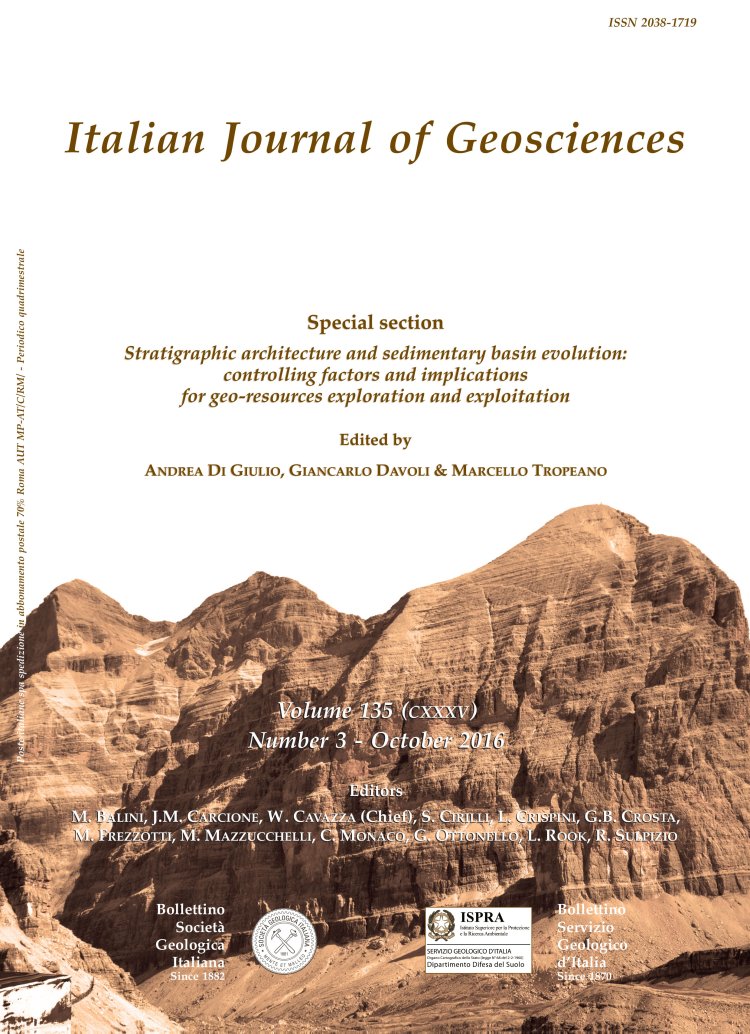
Coupling sedimentation and tectonic control: Pleistocene evolution of the central Po Basin
Francesco Emanuele Maesano (1) & Chiara D'Ambrogi (1)
(1) ISPRA - Servizio Geologico d'Italia, Via Vitaliano Brancati 48 - 00144 Roma; tel. 0039 3805164993 – E-mail: francescoemanuele.maesano@isprambiente.it
Volume: 135 (2016) f.3
Pages: 394-407
Abstract
This study reports, for the first time in a wide basin area, sedimentation rates calculated on decompacted sediments from a 3D model and not only in wells or along sections.
The 3D geological model is used here to analyse the Pleistocene evolution of the central Po Basin. A sequential restoration-and-decompaction workflow is used to obtain six detailed pictures of the basin topography unaffected by sedimentary compaction and tectonic signals in different moments. The maps illustrate the progressive infilling of the basin and the migration of the main depocenters.
The sedimentation rate values are obtained using a 3D analysis of the thicknesses; the results highlight the progressive reduction in the sediment supply (from 2.83±0.19 mm/yr in the Calabrian to 0.39±0.05 mm/yr in the Upper Pleistocene) and the difference in sedimentation rate in different depositional environments.
Moreover the study focuses on the Pleistocene sedimentation and tectonic history of the Piadena anticline, in order to calculate uplift vs sedimentation rates in an area located far from the main tectonic structures.
The obtained results are comparable with literature data and point out the magnitude and the interference of tectonic, sedimentary and climatic processes in the same area, in different moment during the Pleistocene. The workflow applied in this study can be used to discriminate, and in some case to measure, the elusive synsedimentary tectonic signal related to compressive structures growing in a general subsiding basin.
The 3D geological model is used here to analyse the Pleistocene evolution of the central Po Basin. A sequential restoration-and-decompaction workflow is used to obtain six detailed pictures of the basin topography unaffected by sedimentary compaction and tectonic signals in different moments. The maps illustrate the progressive infilling of the basin and the migration of the main depocenters.
The sedimentation rate values are obtained using a 3D analysis of the thicknesses; the results highlight the progressive reduction in the sediment supply (from 2.83±0.19 mm/yr in the Calabrian to 0.39±0.05 mm/yr in the Upper Pleistocene) and the difference in sedimentation rate in different depositional environments.
Moreover the study focuses on the Pleistocene sedimentation and tectonic history of the Piadena anticline, in order to calculate uplift vs sedimentation rates in an area located far from the main tectonic structures.
The obtained results are comparable with literature data and point out the magnitude and the interference of tectonic, sedimentary and climatic processes in the same area, in different moment during the Pleistocene. The workflow applied in this study can be used to discriminate, and in some case to measure, the elusive synsedimentary tectonic signal related to compressive structures growing in a general subsiding basin.
Keywords
Get Full Text